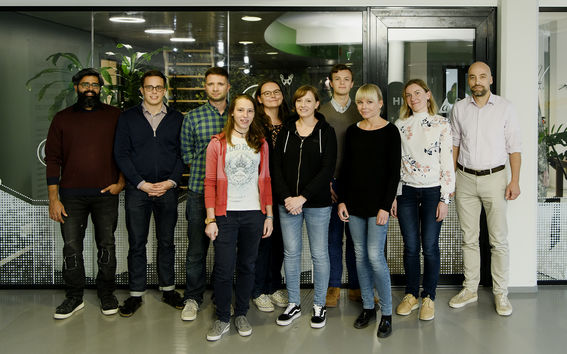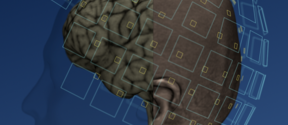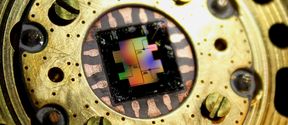New imaging technique to find out what happens in the brains of cats and dogs
A brain imaging device based on quantum optical sensors could also be used to study the brains of human babies

We work at the intersection of neuroscience and neurotechnology by developing novel measurement and analysis methods for studying human brain structure and function, as well as applying these methods to address important and challenging research questions in both basic and clinical neuroscience. We extensively employ neuromagnetic measurements of brain activity, which give a temporally detailed picture of activation dynamics.
Our aims are
Although functional brain imaging can uncover activity patterns encompassing multiple brain regions, the interplay of these regions is usually not directly addressed. Yet, neural processing supporting cognition may dynamically recruit brain functions implemented at distinct cortical regions. These short-lived networks are formed by dynamic functional connections between the participating regions. Electro- and magnetoencephalography (EEG/MEG) measure electric brain activity with high temporal resolution. However, neither method readily provides us with a network structure; they merely show the aggregated activity of all contributing regions. The challenge is to decompose the recorded MEG/EEG data into a sparse and dynamic set of brain signal sources. The goal of this project is to tackle this challenge in a new way, surpassing current functional connectivity estimation methods, and to enable real-time tracking of these networks to allow their use in neurofeedback experiments.
In the context of this project, we also develop advanced modeling of invasive intracranial EEG measurements.
Recent preprints and publications:
Collaborators
We study several aspects of human cognition using MEG and EEG combined with machine learning. Many of our approaches build on brain-signal features specifically reflecting attentive and conscious processing. We also develop brain–computer interfaces both for “closed-loop” neuroscientific experimentation as well as for future clinical applications.
Recent preprints and publications:
Collaborators:
Functional brain imaging methods hold promise for producing valuable information for the diagnostics of many brain disorders; however, the application of these methods is hampered by the lack of a normative database. To this end, we are aggregating a large number of magnetoencephalographic (MEG) and functional magnetic resonance imaging (fMRI) datasets into such a database for the application of machine-learning methods to derive biomarkers that would be indicative of brain disease states.
Recent preprints and publications:
Collaborators:
We exploit recent advances in a novel magnetic sensor technology—optical magnetometry—to construct a new kind of MEG system that allows capturing cerebral magnetic fields within millimetres from the scalp. Our simulations show that this proximity leads up to a 5-fold increase in the signal amplitude and an order-of-magnitude improvement of spatial resolution compared to conventional SQUID-based MEG. Therefore, a high-resolution MEG (HRMEG) system based on optical magnetometers should enable non-invasive recordings of cortical activity at unprecedented sensitivity and detail level, which we capitalize on by characterizing cortical responses, particularly gamma oscillations, during complex cognitive tasks.
Read more and check the publications of this project here.
Collaborators:
Most neuroimaging studies of human social cognition have focused on brain activity of single subjects. “Two-person neuroimaging” refers to simultaneous recordings of brain signals from two subjects involved in social interaction. We have developed a set-up that connects two MEG systems in different laboratories allowing the subjects to interact and we have applied this set-up to study brain functions subserving social interaction.
Recent preprints and publications:
Collaborators:
We are contributing to open-source MEG/EEG analysis software packages.
Recent preprints and publications:



A brain imaging device based on quantum optical sensors could also be used to study the brains of human babies

Innovative sensors that allow detection of the brain’s magnetic field from right on the scalp could enable more precise measuring of brain activity

Aalto University research groups will study and develop technology for quantum communication, ultra-sensitive magnetic sensors based on quantum optics, and photon-emitting quantum chips. The Quantum Flagship launched by the European Union will provide funding for ten years and for over 5000 researchers with one billion euros. The flagship will consolidate the best quantum physics research in Europe and transfer quantum technology from the lab to the market.
Aalto University's newly tenured professors reveal the secrets of aesthetics, biohybrid materials and wireless world, among other things.
Brain imaging has given us a lot of data concerning, for example, how human brains process sensory information.